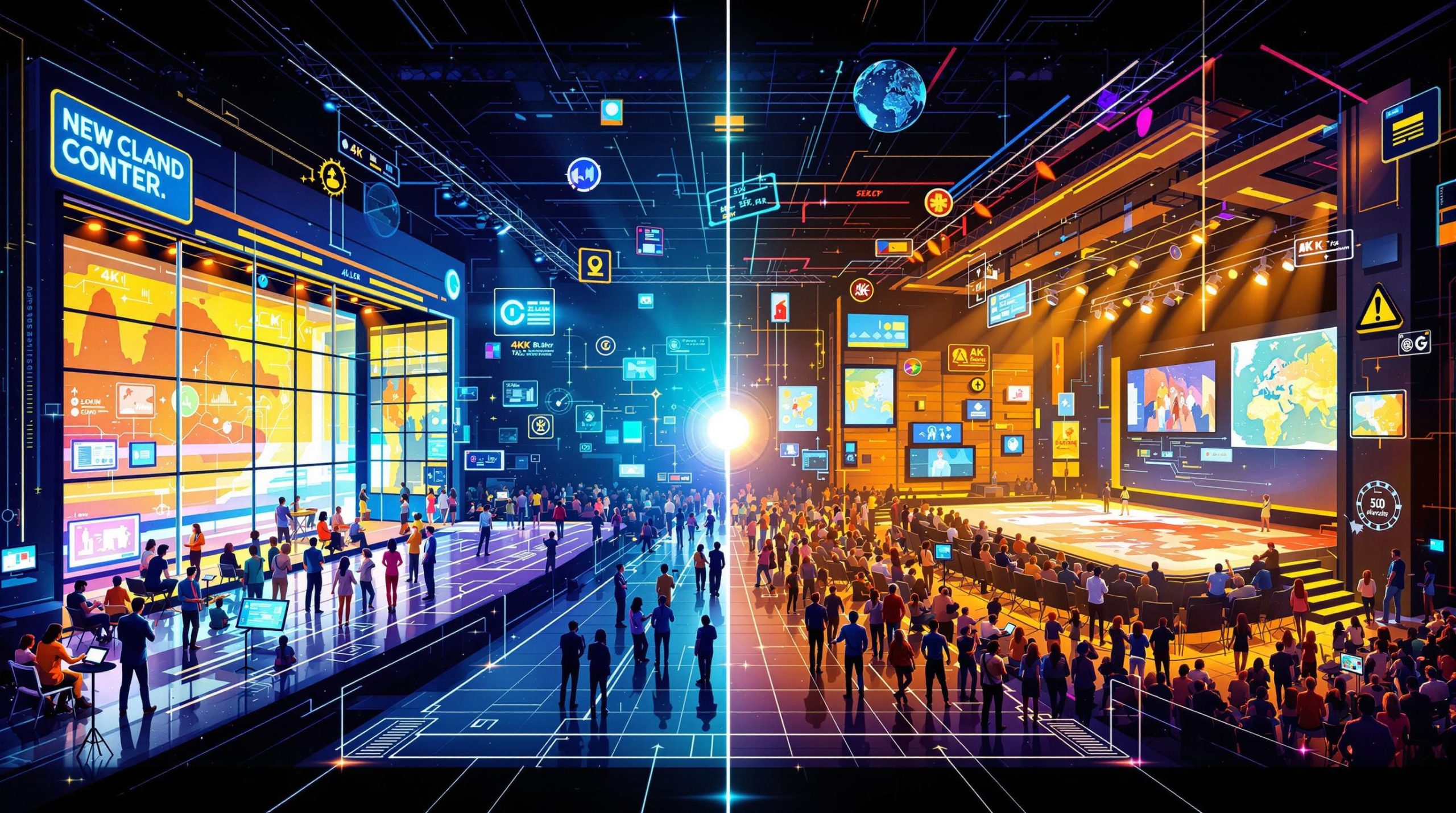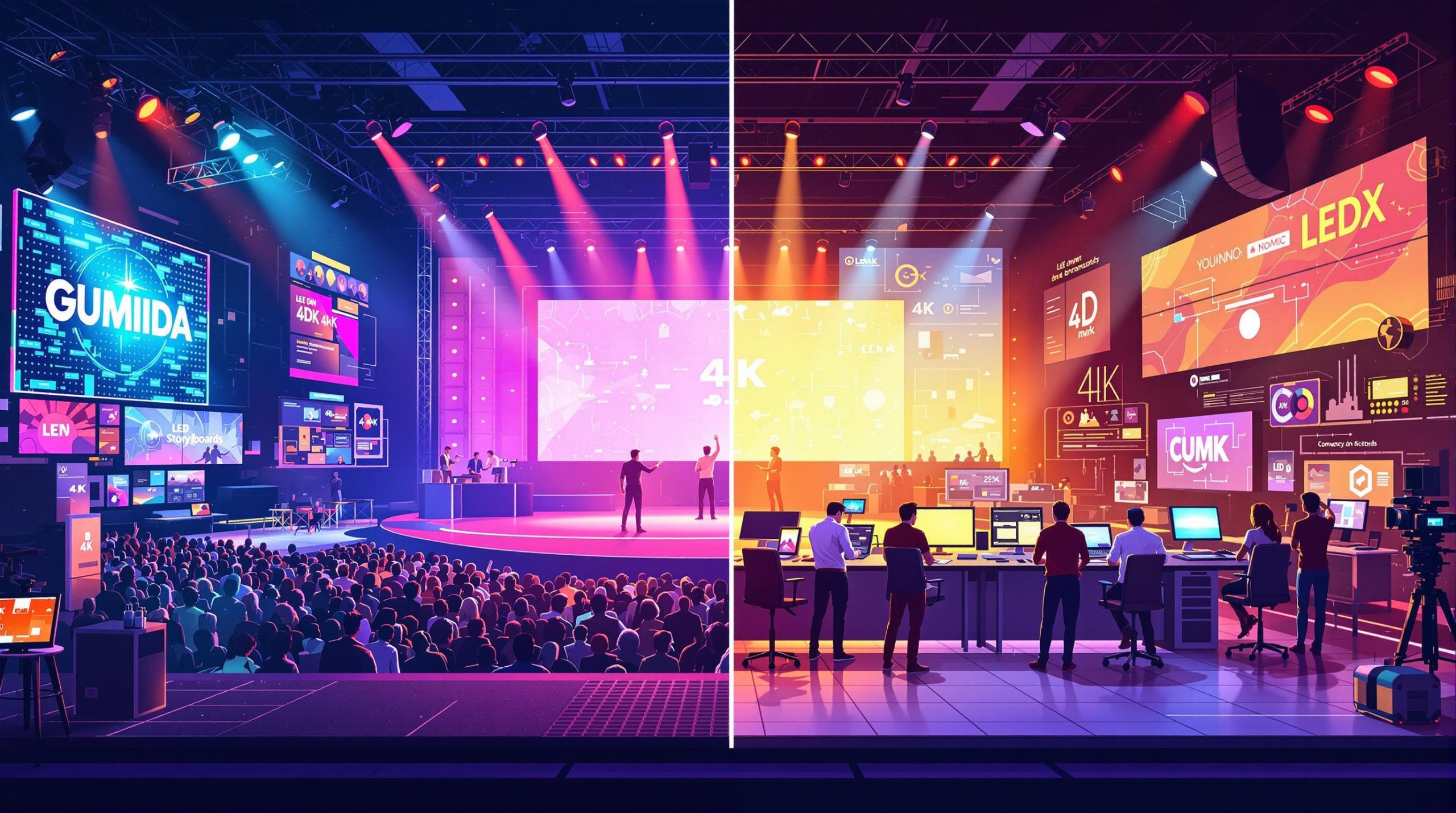The creative and event industries rely on interconnected concepts, each serving unique roles. This article provides an objective analysis of entertainment venues, studio locations, studio setups, branding services, video production, studio exhibitions, event production, creative studios, and team collaboration, comparing them with related technologies and services.
Definitions and Core Concepts

1. Entertainment Venue
Definition: A physical space designed for hosting live events, performances, or gatherings (e.g., theaters, stadiums, concert halls).
Key Features: Large capacity, audience seating, acoustics, lighting systems.
Example: Madison Square Garden in New York hosts concerts and sports events.
2. Studio Location
Definition: The geographic placement of a studio, influencing accessibility, costs, and local regulations.
Key Features: Proximity to talent, tax incentives, infrastructure.
Example: Hollywood studios benefit from California’s film tax credits.
3. Studio Setup
Definition: The physical and technical configuration of a studio, including equipment, lighting, and acoustics.
Key Features: Modular design, soundproofing, green screens, 4K cameras.
Example: Netflix’s production studios use LED walls for virtual sets.
4. Branding Services
Definition: Services that develop and maintain a company’s visual and conceptual identity.
Key Features: Logo design, brand guidelines, marketing collateral.
Example: Pentagram provides branding for companies like Mastercard.
5. Video Production
Definition: The process of creating video content, from pre-production to post-production.
Key Features: Scriptwriting, filming, editing, VFX.
Example: Marvel Studios uses advanced CGI for superhero films.
6. Studio Exhibitions
Definition: Curated displays of art, products, or media within a studio or gallery.
Key Features: Interactive installations, thematic layouts.
Example: The Museum of Ice Cream uses immersive exhibits for brand engagement.
7. Event Production
Definition: Planning and executing live events, including logistics and technical management.
Key Features: Stage design, vendor coordination, live streaming.
Example: Coachella combines music performances with art installations.
8. Creative Studio
Definition: A collaborative space where multidisciplinary teams develop creative projects.
Key Features: Ideation labs, design software, prototyping tools.
Example: Pixar’s studio fosters teamwork for animated films.
9. Team Collaboration
Definition: Tools and practices enabling groups to work together efficiently.
Key Features: Communication platforms (Slack), project management software (Asana).
Example: Remote teams use Zoom for real-time brainstorming.
Comparative Analysis: Similarities and Differences
Entertainment Venue vs. Creative Studio
- Similarities: Both host creative activities.
- Differences: Venues prioritize audience experience; studios focus on content creation.
Studio Location vs. Studio Setup
- Similarities: Both impact production quality.
- Differences: Location affects logistics; setup determines technical capabilities.
Branding Services vs. Video Production
- Similarities: Both enhance brand visibility.
- Differences: Branding is conceptual; video production is executional.
Studio Exhibitions vs. Event Production
- Similarities: Both engage audiences.
- Differences: Exhibitions are static; events are dynamic.
Strengths and Weaknesses
| Concept | Strengths | Weaknesses |
|---|---|---|
| Entertainment Venue | High capacity, established infrastructure | Limited customization, high rental costs |
| Studio Location | Tax benefits, local talent pools | Geographic constraints, permitting delays |
| Branding Services | Builds long-term brand equity | Subjective outcomes, high costs |
| Event Production | Creates memorable experiences | Logistically complex, weather-dependent |
Suitable Scenarios and Case Studies
1. Studio Location: Atlanta’s Film Industry
Atlanta’s tax incentives attracted Marvel’s Black Panther, reducing production costs by 30%.
2. Team Collaboration: Remote Work at Adobe
Adobe uses Microsoft Teams to coordinate global design teams, cutting project timelines by 20%.
3. Video Production: TikTok’s Viral Campaigns
TikTok’s in-app editing tools enable small businesses to create affordable promotional videos.
FAQs
Q: How do creative studios differ from entertainment venues?
A: Studios focus on content creation; venues host pre-made content for audiences.
Q: What technologies are essential for modern studio setups?
A: 4K cameras, LED walls, and cloud-based editing software (e.g., Adobe Premiere Pro).
Q: Can branding services work for small businesses?
A: Yes, agencies like Canva offer affordable DIY branding kits.
Current Trends and Statistics
- Hybrid Events: 68% of event producers now blend live and virtual elements (EventMB 2023).
- Virtual Production: The LED wall market will grow by 19% annually (Grand View Research 2023).
- Remote Collaboration: 73% of creative teams use cloud tools daily (Forrester 2023).
Actionable Insights
- Optimize Studio Locations: Research regional tax incentives before leasing.
- Leverage Collaboration Tools: Use Trello or Asana to streamline workflows.
- Invest in Modular Setups: Flexible studios adapt to diverse projects.
By understanding these concepts, businesses can allocate resources effectively, blending creativity with operational efficiency.
